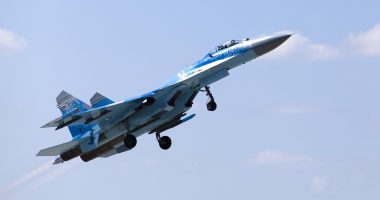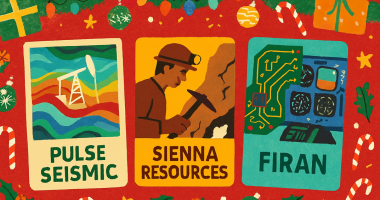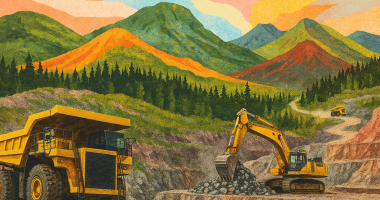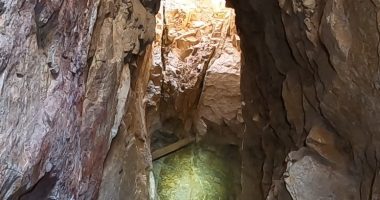Goldshore Resources (GSHR) is a junior gold development company that is tri-listed and is also relatively new. Trading here in Canada the company occupies the Venture Exchange. The company has managed to stay well-financed and is supported by a strong management group.
Here today to talk more about the Moss Lake Project and its M-R-E results, we have the company’s C-E-O, Brett Richard’s with us…
TMH: I know the company drilled for 18 months at the Moss Deposit, and you came out of the work with 6 million ounces of contained gold with more than 1 gram per ton. Were you surprised by these results?
BR: No, I don’t think so. I think it was predictable. We were able to kind of guide ourselves to this 6 million ounce number based on the number of meters we had and projections from the historic resource. I think East Coldstream brought in 560,000 ounces, which is a lower grade but the global resource being 6 million ounces, I think was predictable. I think what we didn’t predict was the grade of the high-grade sheer domain, 55 per cent of our deposit or 3.35 million ounces is at 1.84 grams.
TMH: The domain of Moss Lake has seen an increase in its contained metal and tonnage during the November 2022 mineral resource estimate. Walk us through what caused this increase.
BR: The increase from November to the May 8 release was quite simple. The capital markets have been in a brutal place for 18 months now and we are a victim of it as well as anybody else in the junior mining space in precious metals. So, we’ve had a series of down raises throughout last year and we had a lot of assays in and we were modelling it and we felt, you know what, let’s put out an interim mineral resource estimate in November so that we can possibly get some activity in the market, raise our share price and we were going to raise money. The absolute opposite happened, people predicted we were going to raise money and there was very little liquidity and quite frankly, our share price went down. So, it was just an interim estimate on the way to 6 million ounces. On the May 8th release we just put out, it has 100 per cent of the 79,000 meters we’ve drilled, and the model also has I would say roughly 10 per cent or 15 per cent of the historical drilling included. There were a lot of difficulties with the historic data and the historic drilling. It’s why we have a 6-million-ounce Inferred resource versus the historical resource having a million and a half ounces of Indicated, we just didn’t feel and weren’t comfortable with the spatial errors and the drill spacing in order to put anything up into indicated at this stage. Our consultant probably could have taken the view that given the quality of the historical data origin (Noranda), we could have used more historical data, but they chose to not take this path.
TMH: Last time we spoke you mentioned the resource increase showed the sheer scale of the project and the opportunity that lies ahead. What are these opportunities you speak of?
BR: Absolutely, normally you would be upset with the fact that you’ve lost one and a half million ounces of Indicated and it’s now Inferred based on being unable to completely verify data. The drilling was done by Noranda, and they were the gold standard back in the day. We know that the quality of the data is quite good but there are components of it that are missing, that’s not the issue and normally somebody would be upset with that but we’re not because we know we have a very, very large endowment. There is historic drilling and mineralization that goes out four kilometres from the existing current resource. There are parallel sheers that have been identified with historic drilling and there’s drilling all along the strike and parallel to the southeast as well.
So, the Moss deposit itself is quite large. We feel it has a footprint to go to 15 or 20 million ounces at Moss. It’s open at depth, it’s mineralized at depth, and we’ve done thousand-meter holes and these high-grade shears go quite deep. So, the containment of drilling the to 500 metres is really to support an open pit project that we think we can finance. We could have drilled Moss out to many more ounces, and we will one day and it’s why we’re not as disappointed with this MRE results because we know it’s there. We will get there in due time, everything is a process in this business.
TMH: Also, is there a date in mind when a preliminary economic assessment will start?
BR: It has started. We have selected Ausenco to do a PEA. We’re two weeks into it and we officially signed I guess last week and when we announced but we’ve been thinking about this for some time and we’ve been working on this internally between myself and the VP of Exploration, Peter Flindell, and his team to conceptualize the various mining and process scenarios for some time now and I think that’s the work we’re going do initially. We want to get the scope and the process right here. We’ve got two different types of ore, we’ve got this big low-grade halo that represents 45 per cent of the ore body and we’ve got these high-grade sheers, which are hard and brittle but they liberate quite fine.
So, our recoveries are exceptional, but we have to treat it differently. So, we’re going to be going through process scenarios that deal with the two different types of metallurgical ore.
TMH: Can you speak to the potential of your overall land holding over the 35-kilometre mineralized trend?
BR: It dovetails from the previous question. We have c.>18,000 hectares. Moss represents one of the targets. East Coldstream represents one of the targets, but we have 28 other gold and poly-metallic (copper-cobalt / copper-lead-zinc-gold-silver-moly) targets. We have four base metal targets, including North Coldstream, which was a historic copper mine, and we’ve already tested it. We have 62.5 meters at 0.88 per cent copper equivalent including a 0.09 cobalt credit. So, the North Cold Stream target is quite exciting. We want to get some more drills into that and we will in due time but as I said, these are just three targets on a land package that has +30 high-priority targets. We have 22 gold targets that look like Moss, and they all need to be tested. North Coldstream needs to be proven up and those are the priorities and probably in that order. I’m excited about having copper and cobalt on our property but there is a large number of drill meters to test these targets that we can see in front of us.
TMH: Is there anything else you’d like investors to know that we haven’t covered today?
BR: Two things. First of all, there is the ESG component of this. I think there’s been a lot of noise out there about the environmental status of Goldshore’s Moss Gold Project and it’s been impairing our share price and it’s just simply rhetoric and it’s not true. We have been going through our environmental study work, our baseline study. We have two exploration agreements with our host community First Nations. We’ve been working collaboratively and inclusively with them for two years now and we will continue to monitor and sign off on various remediation requirements, and evaluate all the work we do. They do our environmental signoffs. We work very collaboratively. We provide them with all of the external contracts and when they’re commercially and technically competitive and we hire them and their people. So, it’s a great relationship. Environmentally though, people think that we have an ore body under a lake and some people on the blogs have said 50 meters deep. It is simply not true.
It’s one meter deep and it’s a water basin that will get drained during our permitting process and during our site prep process. So, I think there’s a lot of market rhetoric out there. This leads me to the second piece and that is there’s no better time to invest in Goldshore. We’re trading at just over $6 an ounce. Our peer group trades at $30 to $35 an ounce and our high-grade peer groups trade at $90. So, the downside risk of us moving backwards is extremely low. The upside opportunity to make the multiple of your money at Goldshore is very, very high and we have great news coming out throughout the course of the year. We’re gonna have the results of the PEA out in September or early October and tremendous rerate for us. So, there’s really no better time to be in Goldshore.
This is sponsored content issued on behalf of Goldshore Resources, please see the full disclaimer here.



